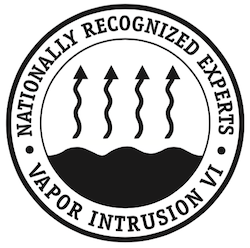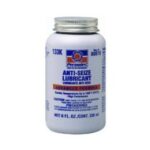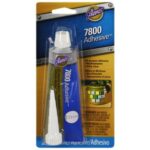As we’ve mentioned in past blogs, one of the scariest ways for a contaminant to get into your home or business, is in the form of vapor, through the cracks in your foundation and floors (Vapor Intrusion). EnviroForensics conducts a multitude of indoor air vapor intrusion assessments each year at structures located near or over a source of subsurface contamination. These assessments help us figure out if the volatile chemical is finding its way into the structure. But they can tricky, since the same chemicals which potentially reside beneath the surface are also commonly found in household products like hobby glues, degreasers, automotive products, etc. (examples pictured below) These materials are called “background sources” and their presence can be problematic in assessing which indoor air impacts are truly coming from the subsurface rather than products already present within the building. EnviroForensics conducts extensive background assessments and documents the materials present prior to completing indoor air testing in order to account for any materials which may contain the chemicals being investigated. These materials aren’t always present, but when they are, it is important to remove them prior to sampling in order to avoid an inconclusive data set which is not truly a representation of conditions caused by contaminant vapors entering the breathing air from the subsurface. A traditional background assessment consists of combing through common household materials, and reading through the lists of active ingredients to confirm the lack or presence of suspect chemical compounds. But can we always trust the fine print of these products? Recently, EnviroForensics discovered that this is not the case.
During recent vapor intrusion testing activities, EnviroForensics identified a background source of tetrachloroethene (PCE) within a glue product which did not list PCE as an ingredient (I know, very tricky). This was made possible due to the fact that EnviroForensics has some of the finest professionals and modern testing equipment to identify and unmask these background sources in disguise. EnviroForensics has an in-house certified analyst trained to operate the Hazardous Air Pollutants on Site (HAPSITE) gas chromatograph/ mass spectrometer (GC/MS) instrument which analyzes air in real-time and provides laboratory-quality analytical results. Utilizing the HAPSITE instrument in the field facilitated the identification of a material containing PCE which did not have the compound listed on its label. With EnviroForensics’ efforts and the use of sophisticated testing instruments, the material was removed from the property prior to completing an indoor air assessment, therefore avoiding the collection of an inconclusive data set which would have hindered progress and over-estimated the health risk to occupants from vapor intrusion.
Common Background Sources That May be in Your Home

















